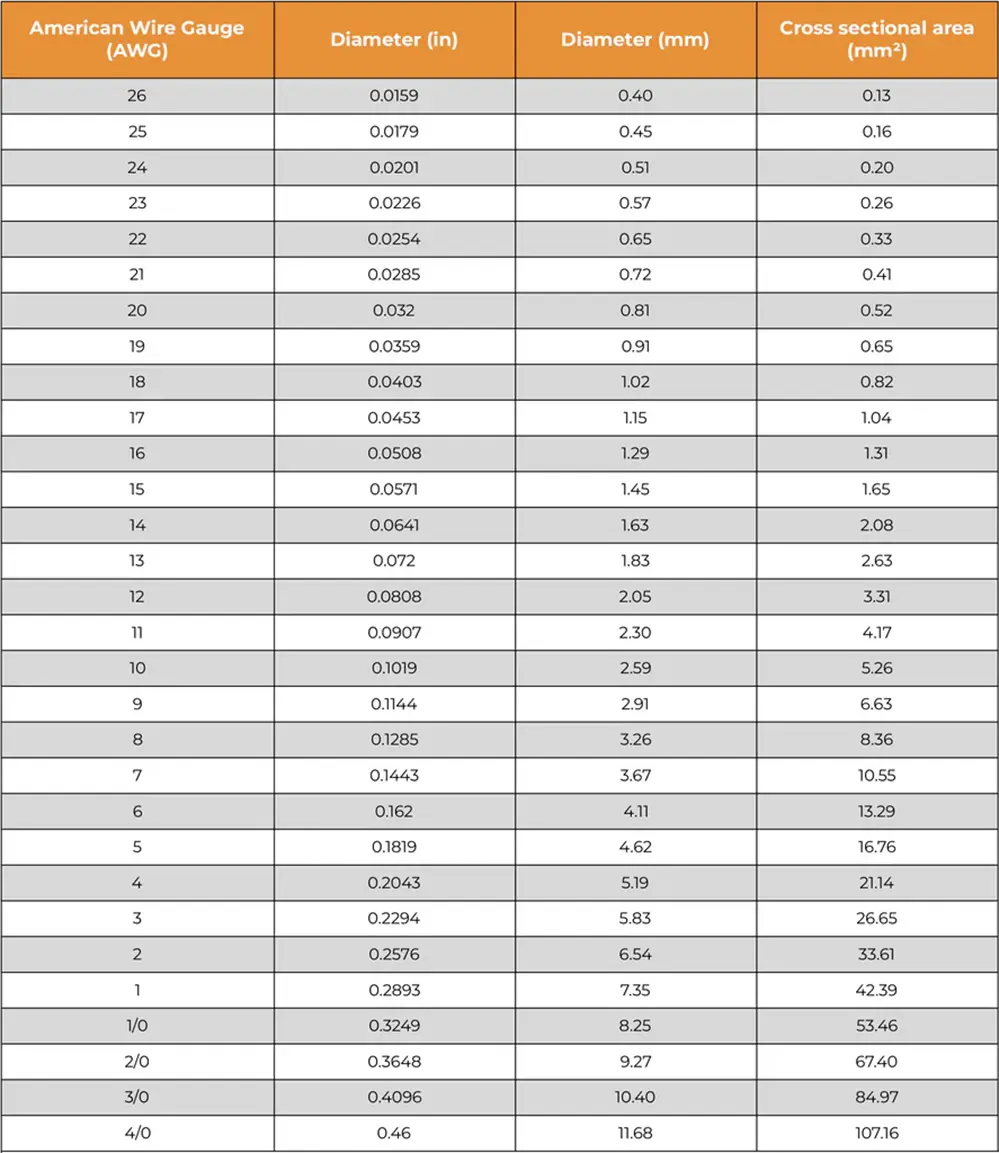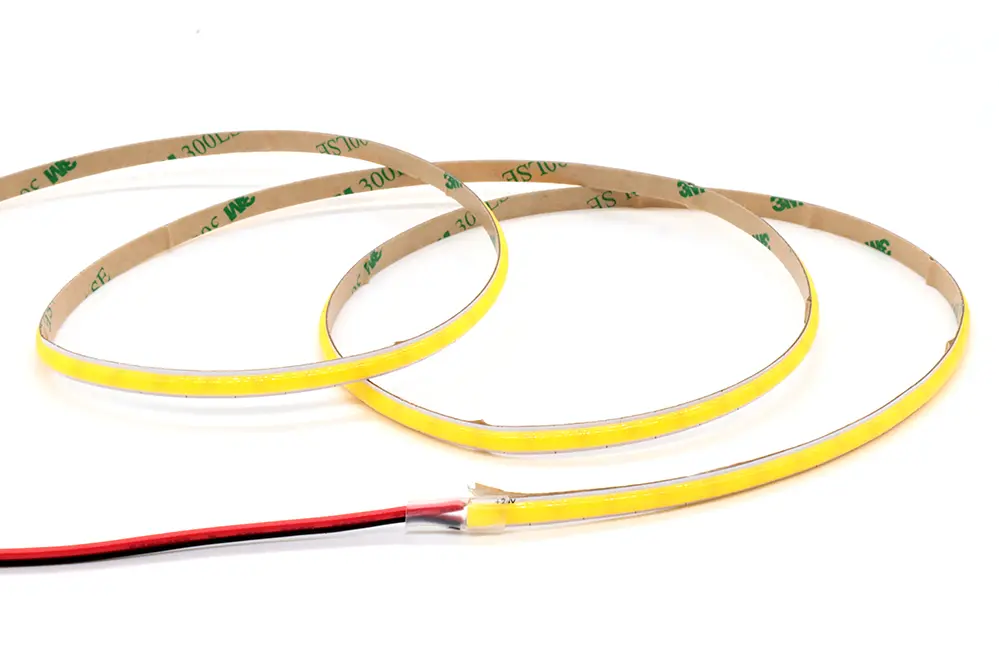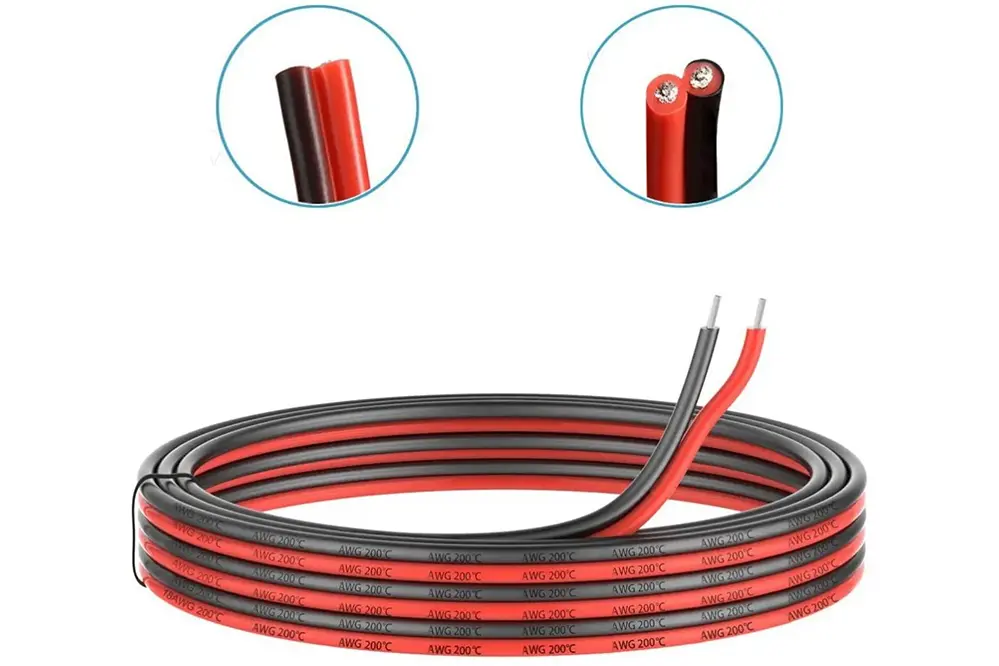When installing LED strip lights, one of the most overlooked but crucial decisions is choosing the correct wire size. While LED strips themselves may seem simple to set up, the wire that powers them plays a significant role in their efficiency, safety, and overall performance. In this guide, we’ll walk through how to choose the best wire size for your LED strip lights to ensure your lighting project is both safe and efficient.
Key Takeaways
• Wire size (gauge) directly impacts the performance and longevity of LED strip lights.
• Choosing the correct wire gauge prevents voltage drop, overheating, and ensures optimal brightness.
• Consider factors like wire length, total wattage, and voltage drop when selecting wire for LED strips.
• 18 AWG is common for shorter runs, but thicker wire such as 16 AWG or 14 AWG may be needed for longer distances.
Understanding Wire Gauge for LED Strip Lights

Wire gauge refers to the thickness of a wire and is typically measured using the American Wire Gauge (AWG) system. In this system, a lower AWG number means a thicker wire, which can handle more current. Conversely, a higher AWG number indicates a thinner wire, which is less capable of handling large currents without overheating.
When wiring LED strip lights, the wire gauge you choose can significantly impact the performance of the lights. If the wire is too thin for the current running through it, it can result in voltage drop, meaning your lights won’t be as bright. In severe cases, using the wrong wire size can even cause the wire to overheat, creating a fire hazard.
Why Wire Gauge is Important
LED strip lights operate at relatively low voltages, commonly 12V or 24V. While this makes them energy-efficient, it also makes them more vulnerable to voltage drop, especially over longer wire runs. Voltage drop occurs when electrical resistance in the wire reduces the amount of voltage that reaches your LED strips, resulting in dim or uneven lighting.
Using the right wire gauge helps to minimize this voltage drop, ensuring your LED strips shine brightly and consistently from end to end.
Factors to Consider When Choosing Wire Size

Selecting the appropriate wire gauge isn’t just about picking the thickest wire possible. Several factors need to be considered to ensure the right choice for your specific LED strip setup.
Voltage (12V vs. 24V)
LED strips generally operate on either 12-volt or 24-volt power supplies. The voltage of your LED strip impacts the amount of current (amperage) flowing through the wire. For a given wattage, 12V strips draw more current than 24V strips, which means the wire size becomes even more critical for 12V systems to prevent overheating and voltage drop.
Amperage (Current) Requirements
The current running through your wire depends on the total wattage of your LED strip lights and the voltage of the system. The more current flowing through the wire, the thicker it needs to be to safely carry the load without excessive heat buildup. As a general rule, if your LED setup consumes more power (wattage), you’ll need a thicker wire (lower AWG number).
Length of Wire
One of the most significant factors in wire selection is the distance between your power source and your LED strip lights. The longer the distance, the more voltage drop you’ll experience. Using a thicker wire can help to mitigate this drop, ensuring that the lights at the far end of the strip are just as bright as those near the power source.
Wattage of the LED Strip
Each LED strip has a certain wattage per meter, which tells you how much power the strip consumes over a given length. Multiply the total length of your strip by its wattage per meter to calculate the total power consumption. This number, combined with the voltage, will determine the amount of current your wire needs to carry.
Voltage Drop
Voltage drop occurs when the electrical resistance of a wire causes the voltage to decrease as it travels over a distance. The longer the wire, the more resistance it adds to the circuit, which means more voltage is lost along the way. To minimize voltage drop, use thicker wire or run shorter wire lengths.
Recommended Wire Gauge for LED Strip Lights
Choosing the correct wire gauge depends on the factors we discussed. Below are some general guidelines to help you pick the right wire size based on the length of the wire run and the total wattage of your LED strips.
| Wire Gauge (AWG) | Recommended Length (up to) | Total Wattage | Voltage (12V or 24V) |
| 18 AWG | 5 meters (16 feet) | Up to 120 watts | 12V or 24V |
| 16 AWG | 10 meters (32 feet) | Up to 240 watts | 12V or 24V |
| 14 AWG | 15 meters (49 feet) | Up to 360 watts | 12V or 24V |
For shorter runs (less than 5 meters), 18 AWG wire is typically sufficient for most standard LED strip installations. However, for longer distances or higher wattage systems, it’s recommended to use 16 AWG or even 14 AWG wire to reduce the risk of voltage drop.
How to Calculate the Correct Wire Size
To calculate the wire size needed for your specific LED strip light installation, you can use the following simple formula:
Wire Gauge Formula:

Where:
• Distance is the length of the wire in feet.
• Current is the amount of electrical current in amps (calculated by dividing the wattage by the voltage).
• Resistance is a property of the wire material (typically provided in ohms per 1,000 feet for each wire gauge).
Alternatively, many online voltage drop calculators can simplify this process. Plug in your wire length, total wattage, and voltage, and the calculator will recommend the appropriate wire size for your setup.
Common Mistakes When Choosing Wire for LED Strip Lights
There are several common mistakes people make when selecting wire for their LED strip lights. Avoiding these pitfalls will ensure your installation is safe and efficient.
Using Wire That’s Too Thin
One of the most common mistakes is using wire that’s too thin for the amount of current it needs to carry. Thin wire can result in significant voltage drop, leading to dim or uneven lighting. In the worst case, it can cause the wire to overheat, creating a potential fire hazard.
Ignoring Voltage Drop
Voltage drop is particularly important for longer wire runs. If you ignore voltage drop and use the wrong wire size, you might find that the lights at the far end of your strip are noticeably dimmer than those closer to the power source.
Overestimating the Current Capacity of Wire
It’s easy to assume that any wire will handle the current your LED strips need. However, every wire has a specific current-carrying capacity, which, if exceeded, can lead to overheating. Always ensure the wire you choose is rated for the current required by your LED setup.
Best Wire Types for LED Strip Light Installations
Not all wire is created equal. Depending on the installation, the type of wire you choose can have a big impact on the overall success of your project.
Copper vs. Aluminum Wire
While aluminum wire is cheaper, copper wire is far superior in terms of conductivity and durability. Copper has a lower resistance, which means it experiences less voltage drop and is better at carrying current over longer distances.
Solid Core vs. Stranded Wire
When wiring LED strip lights, you have the choice between solid core and stranded wire. Solid core wire consists of a single solid piece of metal, while stranded wire is made up of multiple thin strands twisted together.
• Solid core wire is better for permanent, fixed installations since it’s stiffer and holds its shape well.
• Stranded wire, on the other hand, is more flexible, making it ideal for installations where the wire needs to be bent or moved frequently.
Installation Tips for Wiring LED Strip Lights
When it comes to installing LED strip lights, attention to detail is key. Here are some tips to ensure a safe and efficient installation.
Properly Connecting the Wire
Make sure to securely connect the wire to both the power supply and the LED strip. Loose connections can cause flickering, voltage drop, or even complete failure of the lighting system. Use connectors or soldering to ensure a solid connection.
Cutting and Stripping Wires
Use a good quality wire cutter and stripper to avoid damaging the wire during installation. Damaged wires can cause issues with the current flow and may lead to future failures.
Using Connectors and Soldering
For the best connection, soldering wires directly to your LED strips is recommended. However, if soldering isn’t an option, using high-quality snap-on connectors can also provide reliable connections.
FAQs on Choosing Wire Size for LED Strip Lights
Can I use 18 AWG wire for all LED strips?
For short runs (under 5 meters) and low-wattage LED strips, 18 AWG wire is generally sufficient. However, for longer runs or higher wattage strips, a thicker wire like 16 AWG or 14 AWG is recommended.
What happens if I choose the wrong wire size?
If you choose the wrong wire size, several issues can arise. Using a wire that is too thin for the current required can lead to voltage drop, meaning your LED strip lights may appear dimmer, particularly at the far end of the strip. Additionally, thin wire can overheat under high current, potentially damaging your LED lights or even causing a fire hazard. On the other hand, using wire that is too thick is not dangerous, but it may add unnecessary cost and bulk to your installation.
How does wire length affect performance?
Wire length plays a crucial role in the performance of LED strip lights. The longer the wire, the more resistance it adds to the circuit, leading to voltage drop. This can cause the LED lights to dim, particularly on long runs of over 10 meters. To counter this, it’s essential to use thicker wire (with a lower AWG) for longer distances, ensuring consistent brightness along the entire length of the strip.
Do I need thicker wire for outdoor installations?
Yes, outdoor installations generally require thicker wire due to the longer distances often involved and the need for more durable insulation. Outdoor environments can expose wires to temperature fluctuations and moisture, so thicker wires with better insulation can prevent degradation and ensure safe operation. Look for wires with weather-resistant coatings, and always consider using 14 AWG or 16 AWG for longer outdoor runs.
Is stranded or solid wire better for LEDs?
Stranded wire is generally better for LED installations because of its flexibility, making it easier to work with, especially in tight or complicated spaces. It is more suitable for installations that involve a lot of bending or movement. However, if your installation is permanent and won’t require much movement, solid wire can be used, as it offers lower resistance and can be more stable over time.
Conclusion
Choosing the right wire size for your LED strip lights is essential to ensuring the longevity, efficiency, and safety of your lighting setup. By considering factors such as voltage, amperage, wire length, and total wattage, you can make an informed decision that will prevent voltage drop, ensure consistent brightness, and protect your system from overheating.
For shorter runs and standard LED strips, 18 AWG wire will often be sufficient, but as the distance or power requirements increase, you’ll need to use thicker wire, such as 16 AWG or 14 AWG, to maintain performance and safety. Avoid common mistakes like using wire that’s too thin, ignoring voltage drop, or choosing subpar materials like aluminum over copper.
To sum up, proper planning and calculation are key. By selecting the correct wire gauge, using high-quality materials, and following best installation practices, you can create a stunning, safe, and efficient LED lighting system that enhances your space for years to come.
By following the guidelines laid out in this article, you’ll not only optimize the performance of your LED strips but also ensure a smooth and trouble-free installation process. Happy lighting!





